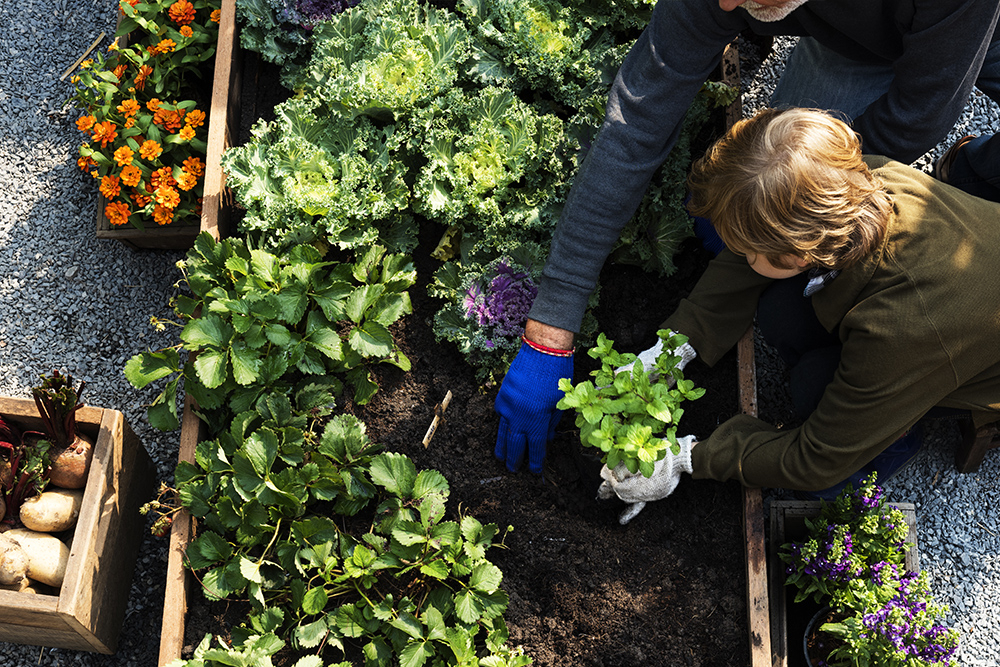The Benefits of a Vegie Garden and How to Make One
Get Inspired
The COVID-19, situation has many of us spending way more time at home than usual and we’re restricted from venturing too far beyond the front gate.
Fortunately, though, there are no restrictions on spending time outdoors in your own garden!
So in light of that, what could be better than starting your own vegie patch? The benefits can be enormous, and it's an easy do-it-yourself project as well.
The many benefits of your own vegie patch
A vegie garden is something all the family can be involved in together, and it can be a great learning experience for kids. It has a number of other benefits as well, including:
- Fresh healthy food – fresh food helps support good health and tastes great. And if you struggle to get your kids to eat vegies, you might find it easier when they’ve been involved in planting and growing them!
- Exercise and fresh air – gardening can be like doing a workout, but in a far more interesting way than a repetitive exercise program.
- Save money – growing your own edible plants from seeds or seedlings can help save you money on your weekly grocery bill.
- Relieve stress and improve health – gardening is a great pastime that studies show can help relieve stress, depression and anxiety, and reduce obesity and heart disease.
- Good for the mind – gardening involves planning and learning new skills which all can be good for your brain.
- Supports recycling – shredded kitchen scraps can be used to make compost, while items like newspaper and cardboard can also be used to line gardens as weed mats.
Getting started with your garden
There are a few things to consider before you start planning your garden:
- Climate zone – Australia has several climate zones, ranging from humid tropical down to cool. The zone you live in impacts on plant success.
- Season – for best results you should plant in season. Plant labels and the back of seed packets usually provide information, or you can ask at your local garden centre.
- Plant varieties – vegetables are not the only option. Other ideas include edible flowers, herbs, seeds, berries and fruit.
What you will need
- A suitable spot – one with a few hours of sun each day but that will also provide protection from strong winds and frost.
- Starter seeds – this could be packet seed varieties, or pre-grown seedlings from your local nursery.
- Healthy soil – free-draining soil rich in organic matter is best. Your soil should be neutral or slightly acidic (pH 6 to 7). Plant nurseries usually supply soil mixtures specially designed for growing vegetables.
- Fertiliser – for adding nutrients to the soil to promote plant health and growth. It's a good idea to have a mask and gloves for handling fertiliser or potting mix.
- Mulch layer – this adds a protective barrier and helps conserve water. Good options include grass clippings, leaves, straw and sawdust.
- Frame materials – such as timber, bricks or metal.
- Tools and equipment – may include a shovel, spade, pruning shears, rake and secateurs, as well as materials and hire equipment to dig your patch and build your garden bed.
Building your garden
Here's how to create your garden in a few simple steps.
- Select your patch – it’s important before digging to make sure there are no pipes or cables underneath. Visit ‘Dial Before You Dig’ before starting.
- Dig your patch – use a shovel to dig your site, or use a mini-excavator which will allow you to dig down about a metre and ensure you have nicely aerated soil. Make sure to level the area off in preparation for the frame – a mini-loader is great for this.
- Build your frame – this could be made from a range of materials, e.g. wood, bricks, metal or even old pallets. A circular saw and cordless nail gun make framing up in timber quicker and easier than a handsaw and a hammer!
- Gather materials – this includes garden soil, fertiliser, mulch and seeds. Hiring a ute can be handy for picking up heavy materials. Add your soil to the garden bed and even out using a lawn rake.
- Create trenches for seeds – plant seeds in rows to the depth indicated on the label, cover with soil and give it all a good watering.
Maintenance of your garden
Regular maintenance includes activities like watering, nutrient feeding and pest control. You should be able to find guidance for this from seed packets or online gardening sites. You can automate the watering process by installing an irrigation system. If you have a large garden, a trencher can make laying the pipe easier.
Crop rotation is also important for minimising pests and managing soil nutrients. This might involve having several beds and moving your plants between them annually.
Putting it all together
Creating a vegie garden is really not so daunting when you have a plan and the right materials and tools. And you can count on Kennards Hire to help you complete your project with the right advice! Head over to our product pages or feel free to get in touch with our team to find out how we can help you create your vegie garden. Our equipment is thoroughly cleaned after every hire, and we offer contactless delivery to keep you safe while at home.

